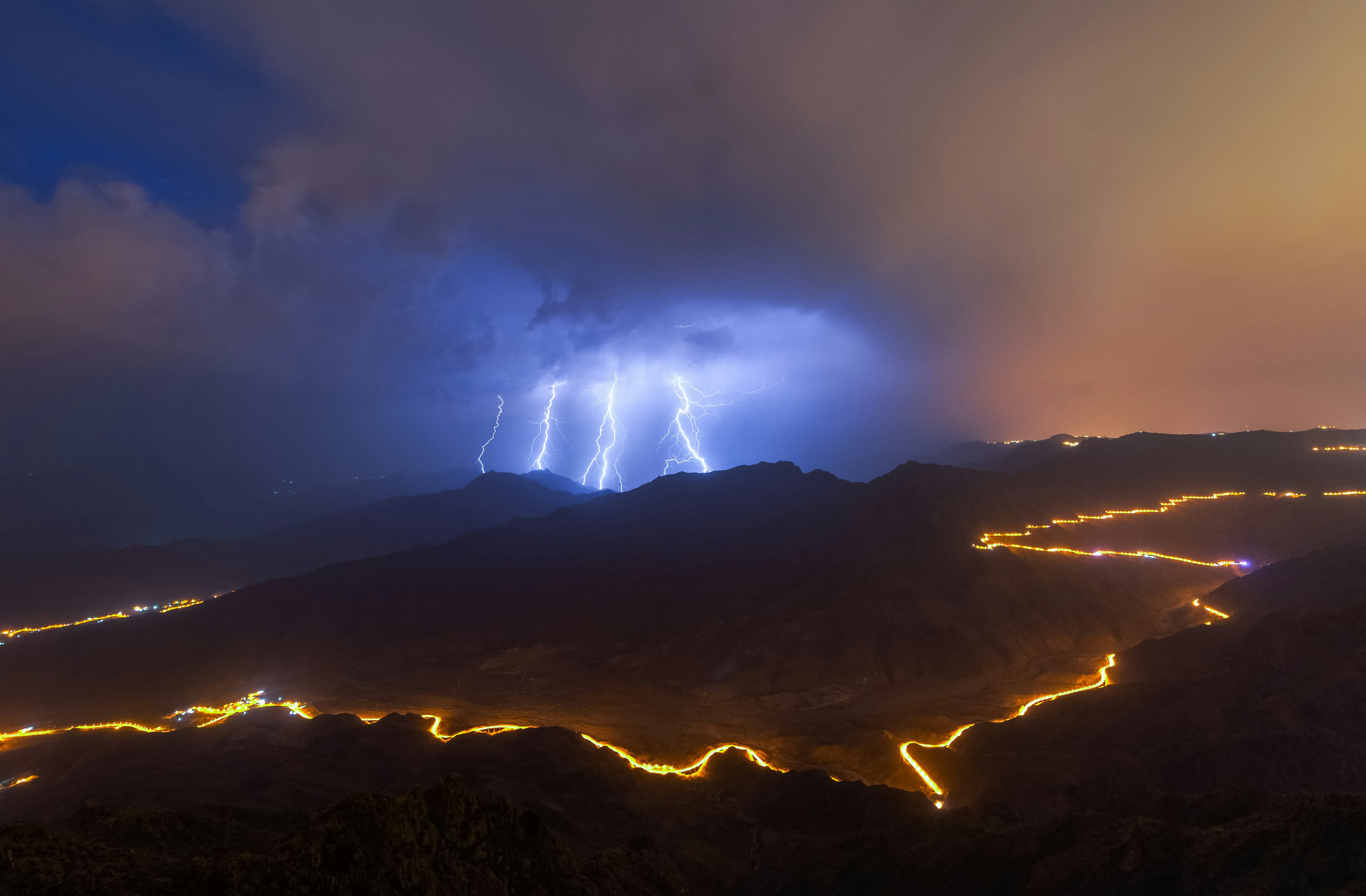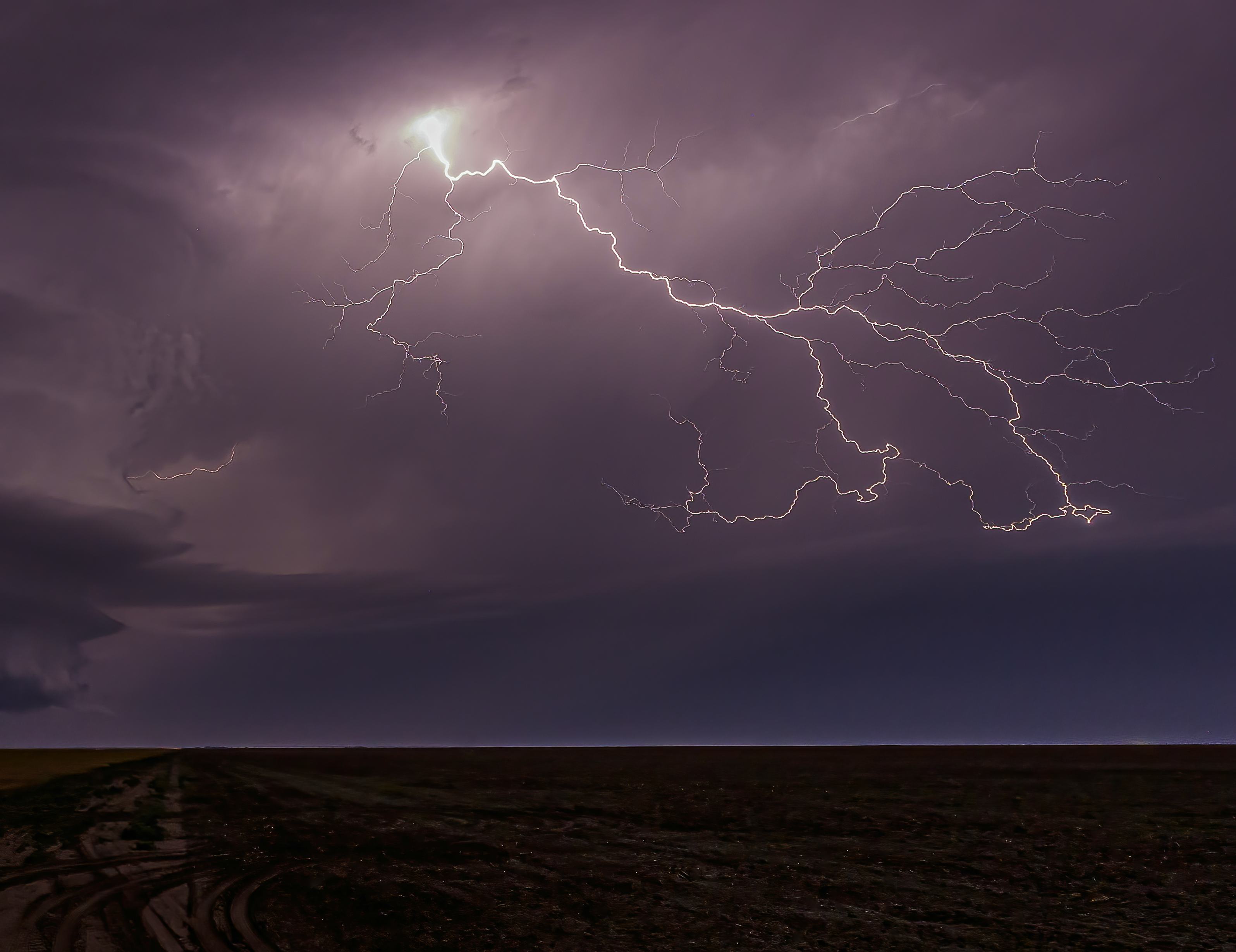
Several studies in recent years have found amino acids, some of the molecules that make up cell membranes, and other key pieces of the chemistry of life floating on grains of interstellar dust. But a recent experiment also found that the reactions that make nitrogen and carbon available for that kind of chemistry could have happened on early Earth — with remarkable efficiency. So which is it? Did life crash-land on our planet or did arise from a bubbling cauldron of planetary ingredients? A growing body of evidence explains how the answer is, well, both. As the researchers explain to Inverse, it’s complicated — and a little bit mind-blowing.

Ride The Lightning
Nitrogen is an essential ingredient for life — an element that is found in proteins, amino acids, and DNA. But not just any nitrogen will do. Most of the time, nitrogen atoms are locked together in close-knit pairs, held together by very strong chemical bonds, which means neither atom is available for chemical reactions. So it needs a little jolt to shake it loose.
Harvard University chemist Hahui Jiang and her colleagues’ recent experiments showed that lightning, especially if it struck wet soil near rivers or lakes, can break these bonds, splitting the coupled-up nitrogen into free atoms. That, in turn, could have set the stage for chemical reactions that produced more complex molecules — including important ingredients for living cells and the nutrients they crave.
Jiang and her colleagues published their work in the Proceedings of the National Academy of Sciences, but Sasselov tells Inverse that it’s only one piece of a much larger puzzle. Exactly where the chemical building blocks of life came from is a puzzle that chemists, astronomers, and biologists are still trying to solve. The answer could help explain our own origins, but it also could help us figure out how likely it is that we’re not alone in the universe.
A 1952 experiment by scientists Harold Urey and Stanley Miller found that lightning can jumpstart chemical reactions that, eventually lead to organic chemistry: the types of molecules that eventually become the building blocks of life. But the story of how a planet full of inert chemicals turned into a planet teeming with life, is a lot more complicated than Urey and Miller ever imagined.
“The origin of life question is more of a puzzle, consisting of multiple pieces that need to fit together, rather than a single breakthrough,” Harvard University astronomer Dimitar Sasselov, a coauthor of the recent study, tells Inverse.
It’s Alive!
Some of the chemical ingredients for life form around deep-sea vents where water and rock meet, and where intense heat provides the energy for chemical reactions. Others can be found in erupting volcanoes. More of the chemistry of life probably happens anytime ultraviolet light hits water, according to another recent study. And most astrobiologists also assume comets and meteors delivered some of the ingredients for life to early Earth.
But some of the stuff cells are made of — including some of the most complex chemical compounds on the ingredients list — may have been part of the starter pack for our newly-formed Solar System 4.6 billion years ago. Astronomers have spotted the telltale spectrum of light emitted by an animo acid called tryptophan in a nearby cloud of interstellar gas and dust, and a chemical called ethanolamine, which is a key part of cell membranes, formed in a cold, dark interstellar cloud more than 100,000 light years away. Other organic chemistry — like the ring-shaped molecule benzene, on which most other organic chemistry is based — has been spotted forming in the cloud of gas and dust around a pair of newborn stars, in chemical reactions powered by shock waves.
The reality is that the chemicals that made up the earliest life on Earth may have take a little from column A and a little from column B — a mixture of deep space feedstock and home-grown biochemistry.
“We cannot limit ourselves to think that the answer to the origin of life comes from a single source,” Arhaus University astronomer Sergio Ioppolo, one of the researchers whose team discovered ethanolamine in deep space last year, tells Inverse. “We should also consider that lightning-induced electrochemistry alone cannot explain the onset of life on the early Earth. It is likely that our planet got the building blocks of life by multiple endogenic [local] as well as exogenic [from space] routes.”
Raw Materials Abound
Sasselov says that even if the Solar System formed with a starting supply of building blocks — amino acids, ethanolamine, and more — those building blocks couldn’t just assemble themselves into working cells. Instead, according to Sasselov, those complex molecules probably got provided things like phosphorus and carbon to the early Earth.
But even a starting supply of several tons of, say, amino acids, delivered by meteors or baked into Earths’ crust, wouldn’t be enough to sustain organic chemistry long enough for life to emerge. Whatever amino acids and benzene rings found their way to early Earth from deep space, they were more useful for their raw materials than as preassembled components for cells. That’s because the chemistry that led to life needed a constant supply of things like carbon, phosphorus, sulfur, and nitrogren.
“[Those molecules] themselves cannot be directly incorporated into the cells which produce life,” says Sasselov, adding, “We now know that some of those chemical reactions which happen in interstellar space are very different from the ones which can sustainably occur on the surface of the Earth later on.”
So the ethanolamine in your cell membranes probably didn’t form on the surface of a distant bit of interstellar dust, but the ingredients were likely there — being carried through the universe to do their thing on the petri dish that is Earth.
Putting It All Together
“The work of Jiang and her colleagues is one of the many pieces of the puzzle which we should build on,” says Ioppolo.
And the particular piece of the puzzle Jiang and her colleagues were interested in was small but vital: how early Earth got enough nitrogen, in a usable form, to fuel the chemical machinery that eventually produced — and sustained — life. They found that lightning was the solution to that particular piece of the puzzle, especially when it struck water or wet soil, where a wider selection of minerals could get in on the resulting chemical reactions. (In contrast, Urey and Miller just studied the effects of lightning in midair back in 1952, because that’s easier to simulate in a lab.)
Sasselov emphasizes that we shouldn’t picture a single lightning strike spawning life here on Earth. It took a very long time, and a lot of small events adding up, before life finally arose.
“The origin of life is not a single event, or a number of single events, in which the chemistry happened once, almost miraculously, somewhere on the surface of the planet, and then everything went on afterwards,” says Sasselov. “That kind of scenario doesn't work.”
Because the story of life’s origins is so complex, it takes scientists from a wide range of disciplines to put the whole puzzle together.
“In my view, our only chance to address the fundamental question of the origin of life is to put different scientific communities together and tackle the issue from many different perspectives including astronomy, astrochemistry, astrobiology, planetary science, volcanology, and biology,” says Ioppolo.







